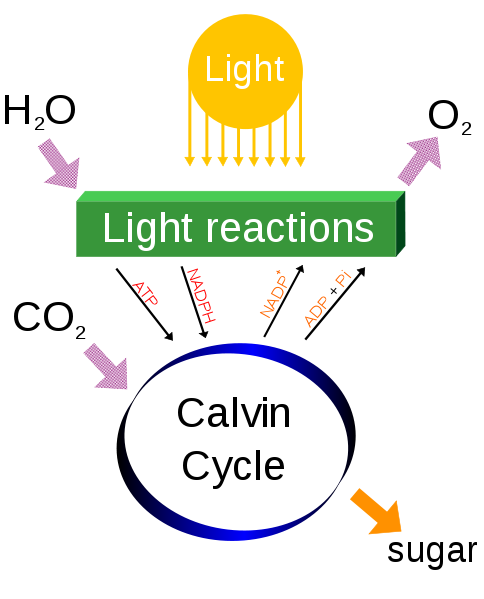Nutrition
All species of Mistletoe are parasitic, they grow on the
stems of trees and draw water and minerals from their hosts.
However they are capable of photosynthesis and use the process
to provide most of their sugars. Shortly after sprouting the
roots of the mistletoe plant grow into the xylem of its host plant,
acting as a continuation of the host's xylem in order to draw away
water and minerals intended to travel to the host's leaves for
photosynthesis. During the early
stages of its life cycle the mistletoe also takes sugars from its
host but once the leaves are able to conduct photosynthesis the
plant begins to rely on its own photosynthesis for sugars. The
host continues to provide water and minerals.
Diagram of photosynthesis, the process through which all plants obtain the majority of their sugars.
